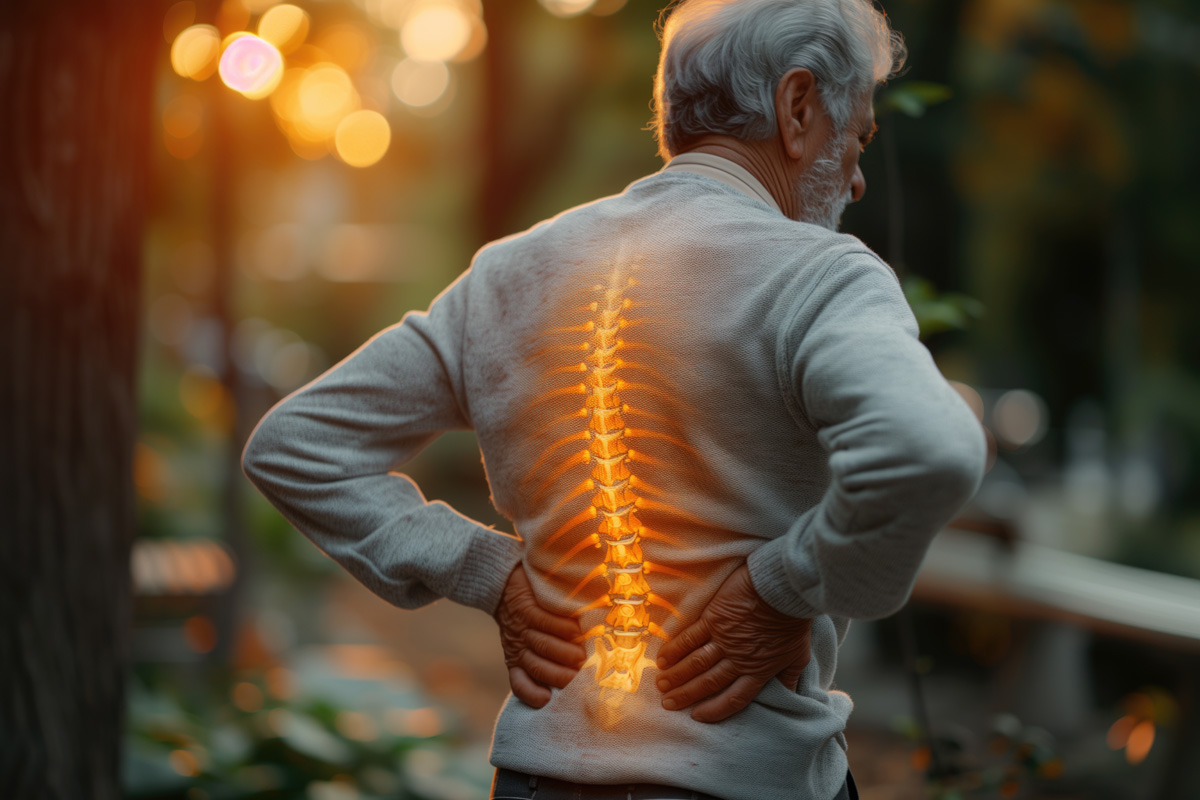Back spasms, involuntary contractions of the muscles in the back, can be a debilitating condition, impacting daily life and overall wellbeing. Addressing this issue requires an understanding of the causes, symptoms, and potentially effective prevention and treatment strategies. A multifaceted approach, encompassing lifestyle modifications, targeted exercises, and medical interventions, may be required. Yet, how can one identify the most effective strategies? And when should one seek professional medical assistance? These are critical questions that merit thoughtful exploration and discussion.
Understanding Back Spasms
One must first comprehend that back spasms are involuntary contractions or movements of the muscles in the back, frequently linked with pain, discomfort, or a noticeable hitch in normal mobility. These spasms can be triggered by a variety of factors, known as spasm triggers, which further complicate the issue. The triggers can range from physical strains to psychological stress, and understanding them is vital in managing and preventing the onset of spasms.
The complexity of the spinal anatomy plays a significant role in why back spasms occur. The spine, which is composed of a series of interconnected bones, nerves, and muscles, is a critical part of the body’s structural framework. When any part of this complex structure is strained, stressed, or injured, it can lead to muscle spasms in the back.
Furthermore, the interplay between the neurological and musculoskeletal systems is essential in the occurrence of spasms. Nerve signals control muscle contractions and when these signals are disrupted, it could result in involuntary muscle contractions or spasms. Therefore, a thorough understanding of spinal anatomy and spasm triggers is fundamental in addressing back spasms.
Identifying Causes of Spasms
Identifying the potential causes of back spasms is a crucial step in the process of effective treatment and prevention. Back spasms often occur as a result of underlying issues within the spinal structures. These issues may include muscle strain or sprain, spinal stenosis, herniated discs, or osteoarthritis. Being overweight or having poor posture can also contribute to the occurrence of back spasms.
Spasm triggers can vary widely among individuals. However, some common triggers include lifting heavy objects, overuse of muscles during rigorous physical activities, and sudden movements that put strain on the back. Additionally, factors such as age, stress, and a sedentary lifestyle can increase the risk of back spasms.
Spasm prevention is mainly focused on addressing these triggers. Adopting a healthy lifestyle, maintaining a healthy body weight, and practicing good posture can help prevent back spasms. Regular exercise, particularly activities that strengthen the core muscles, can also help reduce the risk of back spasms. Furthermore, it is advisable to use proper techniques when lifting heavy objects and to take frequent breaks when involved in activities that strain the back muscles. By understanding and addressing the causes of back spasms, you can effectively manage and prevent this condition.
Recognizing Spasm Symptoms
Recognizing the symptoms of back spasms is crucial in prompt and effective treatment, and these can manifest as sudden, sharp pain in the lower back, difficulty moving, and muscle tightness or cramping. The pain is often intense and can occur without warning, making it difficult to predict the onset of a spasm.
Understanding the spasm triggers is an essential step in managing the condition. Physical activities such as lifting heavy objects, twisting the back in an unnatural position, or sudden movements can induce a back spasm. Emotional stress and poor sleep can also contribute to muscle tension, leading to spasms.
Pain management becomes vital during a spasm episode. Over-the-counter pain relievers, muscle relaxants, and heat or cold therapy can help in alleviating the symptoms. However, it is important to consult a healthcare provider before starting any medication regimen.
The intensity, frequency, and duration of the spasms can vary among individuals. Persistent or recurring spasms that interfere with daily activities necessitate a visit to a healthcare provider. Timely diagnosis and treatment can prevent further complications and enhance the quality of life.
The Role of Proper Posture
Maintaining proper posture plays a crucial role in preventing back spasms and alleviating existing symptoms, by ensuring the correct alignment and minimizing strain on the back muscles. Over time, poor posture can lead to muscle imbalances and unnecessary tension in the back, triggering painful spasms.
The integration of posture correction devices such as back braces, posture correctors, or lumbar rolls can be beneficial in helping to maintain the natural curvature of the spine, promoting healthier posture habits. These devices work by providing the necessary support and cues to the body, which helps in retraining the muscles to assume correct postures.
Furthermore, the implementation of an ergonomic workspace design is instrumental in preventing back spasms. An ergonomically designed workspace, including seating arrangements and workstation setup, encourages the maintenance of good posture by supporting the body’s natural alignment. This can notably reduce the pressure on the back muscles and spinal discs, preventing muscle fatigue and spasms.
Stretching Exercises for Relief
In the pathway towards relief from back spasms, one cannot overlook the significance of stretching exercises. To optimize the benefits, it is important to comprehend the causes of back spasms, learn the most effective stretching techniques, and understand the necessary precautions to take during these exercises. The subsequent discussion will provide detailed insights into each of these critical aspects.
Understanding Back Spasm Causes
To understand the root of back spasms, it’s important to investigate the common causes and explore how stretching exercises can provide significant relief. Back spasms are often a result of poor spinal alignment, muscular strain or injury, and age-related degenerative changes. Spasm management, hence, involves addressing these underlying issues. Spinal alignment can be improved using postural exercises and ergonomic modifications, reducing the strain on the muscles and nerves. Regular stretching exercises can also help alleviate muscle tension, improve flexibility, and promote better spinal health. Understanding these causes and their remedies is essential in preventing and managing back spasms effectively. In the long run, consistent application of these strategies can lead to significant reduction in spasm frequency and severity.
Beneficial Stretching Techniques
Exploring the world of beneficial stretching techniques, it becomes evident that these exercises play a vital role in alleviating the discomfort of back spasms by enhancing flexibility, reducing muscle tension, and supporting peak spinal health. Yoga, for instance, offers exceptional benefits. Its series of stretches and poses can improve posture, promote circulation, and lead to stronger, more flexible muscles, directly addressing the root causes of back spasms. Acupuncture, though not a stretching technique, has proven effectiveness for back pain relief. It works by stimulating specific points in the body to release tension and enhance energy flow. Combining these two methods can bring about substantial relief, making them integral components of a holistic approach to managing back spasms.
Precautions During Stretches
While stretching exercises can offer significant relief from back spasms, it’s important to undertake these activities with appropriate precautions to avoid injury or exacerbating the condition. Proper breathing techniques during stretches can help to reduce muscle tension and promote relaxation, aiding in the alleviation of spasms. It’s important to breathe deeply and evenly, not holding your breath during the process.
Footwear selection also plays an essential role. Wearing shoes that provide adequate support can help maintain balance and body alignment during stretching exercises, thereby reducing the risk of strain or injury. Choose footwear that is comfortable and properly fitted to your feet. It is advisable to consult with a physical therapist or fitness professional to learn more about appropriate stretching precautions.
Impact of Hydration on Spasms
Maintaining adequate hydration plays a pivotal role in preventing and managing back spasms, as dehydration can lead to muscle cramping and discomfort. Proper hydration techniques and a consistent water intake frequency can help maintain muscle health and reduce the likelihood of spasms.
- Drink Regularly: Aim to consume water at regular intervals throughout the day, not just when you feel thirsty. Spacing out your hydration can help guarantee your body maintains a consistent hydration level.
- Monitor Urine Color: A simple way to check your hydration status is by looking at the color of your urine. Light-colored urine typically indicates proper hydration, while dark-colored urine can indicate dehydration.
- Consider Hydrating Foods: Hydration doesn’t just come from drinking water. Foods with high water content, such as fruits and vegetables, can also contribute to your overall hydration status.
- Rehydrate After Exercise: Physical activity can cause you to lose water through perspiration. Always rehydrate after workouts to replenish lost fluids and prevent muscle cramping.
Nutrition for Back Health
Maintaining a well-rounded diet is paramount for overall back health, specifically in promoting spinal strength and reducing the likelihood of spasms. Certain foods, rich in essential nutrients such as calcium and vitamin D, can contribute to the fortification of the spine. In the subsequent sections, we will outline the dietary elements essential for excellent back health and their corresponding benefits.
Balanced Diet Importance
The importance of a balanced diet, replete with essential nutrients, cannot be overstated when it comes to fostering robust back health and mitigating the frequency of back spasms. Dietary supplements play a vital role in filling nutritional gaps, thereby positively impacting your back health. Additionally, sound weight management strategies are essential to alleviate undue pressure on your spine.
- Essential Nutrients: A diet rich in vitamins D and B12, calcium, and magnesium supports bone health.
- Dietary Supplements Impact: Complement your diet with supplements like Omega-3 fatty acids and Vitamin D, if required.
- Weight Management: Maintain a healthy weight to prevent excessive strain on your back.
- Hydration: Adequate fluid intake ensures good disc health, reducing the risk of back spasms.
Foods for Spine Strength
Building on the concept of a balanced diet and hydration, let’s turn our attention to specific foods that can enhance spine strength and contribute to overall back health. Foods rich in calcium and vitamin D have been shown to aid in bone density improvement, a critical factor for spine health. Dairy products, green leafy vegetables, and certain types of fish are excellent sources of calcium. Pair these with Vitamin D sources such as fatty fish or fortified foods for best absorption.
Incorporating calcium-rich recipes into your daily diet, like a spinach and salmon salad or a yogurt and fruit parfait, can provide significant benefits. Additionally, regular hydration can aid in maintaining disc elasticity, further supporting a healthy spine. Proper nutrition can, as a result, play a pivotal role in preventing back spasms.
Over-the-Counter Remedies
Exploring over-the-counter remedies can provide immediate relief for back spasms, offering a convenient and accessible solution. These remedies often employ effective pain management techniques and capitalize on the cold therapy benefits. Here are four over-the-counter options worth exploring:
- Non-Steroidal Anti-Inflammatory Drugs (NSAIDs): These are ideal for short-term relief. They work by reducing inflammation, which in turn lessens the pain.
- Topical Analgesics: These are creams or ointments applied directly to the skin over the area of pain. They often contain menthol or capsaicin, which provide a warming or cooling sensation, respectively, and can help with pain relief.
- Cold Packs: These can be used to reduce inflammation and numb the area, providing immediate relief. This is a simple yet effective example of cold therapy benefits.
- Over-the-counter Muscle Relaxants: These drugs can help reduce muscle tension and alleviate pain.
Prescription Treatments Available
When exploring options to alleviate back spasms, prescription treatments offer a potent alternative to over-the-counter remedies. This section will outline the various types of prescription medications available, along with their respective uses for back spasms. Additionally, we will discuss potential side effects associated with these treatments, providing a thorough understanding of these medical interventions.
Types of Prescription Medications
Exploring the domain of prescription treatments available, various types of medications can be administered by healthcare professionals to alleviate back spasms. These medications, given their effectiveness, are subject to strict dosage regulations.
- Muscle Relaxants: These reduce muscle tension and alleviate pain, often used for acute back spasms.
- Non-steroidal anti-inflammatory drugs (NSAIDs): These can help reduce inflammation that may be contributing to the spasms.
- Narcotic Pain Medications: For severe pain, opioids may be prescribed but are typically a last resort due to addiction risks.
- Neuromodulating Medications: These are used to modulate the nervous system and can be effective for chronic back spasms.
Each medication type has its own effectiveness and proper dosage regulations, which should be followed under the guidance of a healthcare professional.
Potential Side Effects
While prescription medications can effectively alleviate back spasms, it is important to understand that they may also bring about potential side effects. Certain drugs can have physical impacts like drowsiness, constipation, or risk of addiction, indicative of medication misuse. It’s essential to follow the prescribed dosage and duration to prevent such complications.
On the other hand, surgical interventions, although much less common, may also present side effects. Post-operative pains, infection, or allergic reactions to anesthesia are potential risks. In some cases, surgery might not fully relieve the spasm or could potentially lead to other issues like scar tissue formation. Always consult with a healthcare professional about potential risks and benefits before deciding on a treatment plan for back spasms.
Importance of Rest and Recovery
The cornerstone of an effective back spasm treatment plan, rest and recovery play a pivotal role in allowing the muscles to heal and regain their normal function. The importance of sleep cannot be overstated as it facilitates healing and reduces inflammation. While sleeping, your body releases growth hormones that aid in tissue repair. Additionally, resting during the day, especially when spasms occur, can ease the strain on your back muscles.
The following recovery techniques can additionally enhance the healing process:
- Hydration: Drinking ample water supports overall bodily functions, including muscle recovery.
- Nutrition: Consuming a balanced diet rich in proteins and vitamins can accelerate tissue repair.
- Gentle Exercises: Light stretching and mobility exercises can gradually restore normal muscle function without causing additional strain.
- Mindfulness Techniques: Practices such as meditation and deep-breathing exercises can help manage pain and stress, contributing to better sleep and recovery.
When to Seek Medical Help
Recognizing the signs of a severe back spasm and knowing when to seek medical attention can prevent further complications and aid in faster recovery. Typically, back spasms are transient and self-limiting, resolving with conservative measures such as rest, heat application, and over-the-counter analgesics. However, certain emergency signs necessitate immediate medical intervention.
These include severe pain that doesn’t subside with rest or analgesics, pain accompanied by fever, sudden weight loss, or loss of bladder or bowel control. Additionally, if the spasm is associated with numbness, tingling, or weakness in the legs, or if the pain radiates down one or both legs, medical intervention is necessary. These symptoms could indicate serious conditions such as spinal stenosis, herniated disc, or cauda equina syndrome.
Also, if the back pain is a result of a fall or injury, or if it’s severe and doesn’t improve with rest, it’s important to seek medical attention. Remember, timely intervention can prevent the progression of serious conditions and facilitate early recovery. Understanding when to seek help is pivotal in managing back spasms effectively.
Frequently Asked Questions
How Does Stress Contribute to Back Spasms?
Stress can exacerbate back spasms due to the body’s physical response to psychological impacts. Tense muscles can trigger spasms. As a result, stress management techniques, such as relaxation exercises, can help in reducing their frequency and intensity.
Can Back Spasms Be Linked to Certain Lifestyle Habits?
Yes, certain lifestyle habits can indeed contribute to back spasms. Poor posture, lack of exercise, and dietary impact such as dehydration can act as spasm triggers, causing involuntary muscle contractions in the back.
Does Wearing High Heels Increase the Risk of Back Spasms?
Yes, wearing high heels can potentially increase the risk of back spasms. A posture analysis would typically show that high heels alter spinal alignment, leading to muscle strain. Consider heel alternatives for better spinal health.
What Specific Yoga Poses Could Help Alleviate Back Spasms?
Incorporating Yoga into your daily routine can offer therapeutic benefits for various health issues. Specific poses, such as the Child’s Pose, Cat-Cow Pose, and Pigeon Pose, can help alleviate discomfort associated with back spasms.
How Does Prolonged Sitting in Front of a Computer Impact Back Spasms?
Prolonged sitting in front of a computer can exacerbate back spasms due to poor posture and lack of movement. An ergonomic assessment can identify issues and suggest posture corrections to alleviate and prevent such problems.



